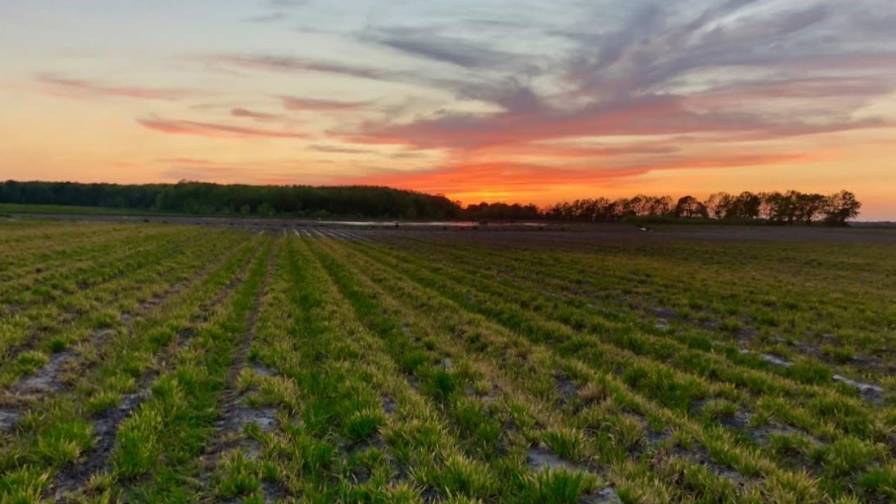Biopesticides Are Shaping How the World Views Agriculture
Changing the perception of agriculture, not only in the West but increasingly all over the world, is at the heart of biologicals’ development going forward.
“It delivers a strong message when companies recognize (consumers) as the key contributors to our future … Our agenda going forward, in terms of what we need to be and sustainability, has biologicals very close to it,” George Stavrides, Global Product Management Lead, Biocontrols with Syngenta, told CropLife® magazine.
In a sign of Syngenta’s commitment to biologicals, last year, mid-pandemic, the company and Novozymes received their first wave of regulatory approvals in Europe and Central America for the biofungicide Taegro, targeted at specialty and vegetable crops. Stavrides remarked at how quickly everyone involved adapted to virtual communications, securing a successful launch.
“Unlike fruits and vegetables where there is more latitude on cost for biopesticide use, row crops are a lot more demanding. Not only the economies of scale but also the practicalities and fundamentals of biocontrols need to be in place. Are we there yet? No. We’re in a situation where we have higher demand, and at the same time, companies big and small are striving to meet that demand.”
Syngenta is looking to change this before year’s end, he said, with a new solo biocontrol product for row crops, to be offered with recommendations on product use in conjunction with synthetic chemistries to provide season-long control of targeted pests.
While growth in biologicals fell amid the pandemic of 2020 between 3% and 5% below 2019 levels, the fundamental drivers of biologicals are solidly in place — signaled by a pickup in mergers and acquisitions activity in late 2020 and early 2021, notably Syngenta’s purchase of Valagro. Growth is expected to rebound to the low- to mid-teens on a percentage basis over the next five years, according to Mark Trimmer, Managing Partner at DunhamTrimmer.
“We still see there is a lot of desire for the kinds of solutions that these products are providing to meet consumer demand for safe produce and sustainably produced food,” yet, to date, he said, biologicals comprise only about 5% of the global crop protection market. “There’s an unmet need.”
For biopesticides adoption in row crops to grow, products must penetrate foliar use, versus the current concentration of biologicals around seed treatments, Trimmer explained. Bioinsecticides and biofungicides remain the most likely candidates to fill this role, driven by the explosion of microbial discoveries.
More Deals, Winfield’s Next Move
Marrone Bio Innovations and Vive Crop Protection are making headway into row crops with a new combination product combination product of azyoxystrobin and Regalia, called AZterknot FC, pending regulatory approval in 2021.
In February, FMC inked a deal with Novozymes to collaborate on enzyme-based biocontrol technology focused on controlling key soybean fungal diseases such as Asian Soybean Rust, in addition to combination products with FMC’s diamide insecticide technology for controlling key insect pests.
Bioherbicide R&D is another area to watch. “An effective bioherbicide is a tremendous opportunity for the first company that can solve that challenge,” Trimmer said.
Getting down to the retail level, WinField United’s Jason Haegele, Agronomist in Illinois, told CropLife that interest in integrating biological solutions has increased such that the company will deploy its first large-scale trials in corn and soybeans devoted exclusively to biologicals in its Answer Plot program in 2021. WinField United will work with half-dozen biological manufacturers to vet products that are either in development or are preparing for commercial launch.
“A lot of our retail owners will have companies walking through the door, asking for a sale or asking to do trial work or on-farm research. Our retail owners are looking to us for guidance or validation on where to start their journey with biologicals. As a result of that, we’ll start in-field-testing this season,” Haegele said.
“Based on the existing data that basic manufacturers of a biological might have, the goal is to validate that in a broader geographic footprint in our Answer Plot system and to ultimately make that data available to our retail customers as well as farmers as a ‘Consumer Reports’-type of approach to understanding biological performance,” he explained. “We hope to build on our successes and findings from 2021 trials and look to add more manufacturers and products in 2022 trials. It’s safe to say, this area of biologicals is not going to go away — it’s only going to grow and increase over time.”






